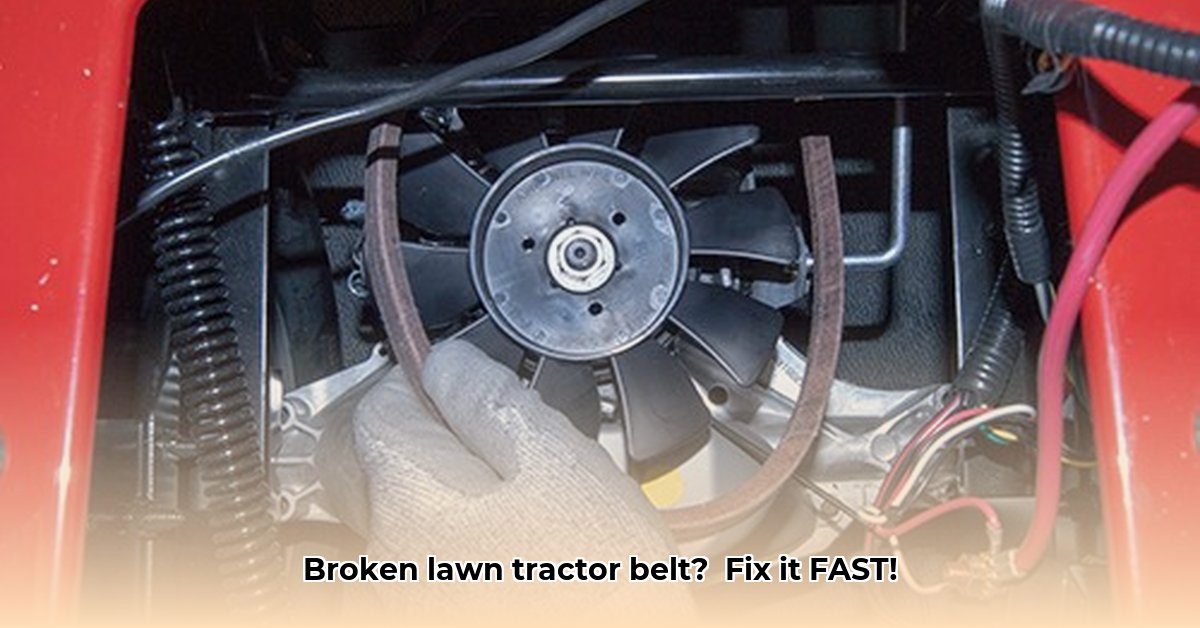
Is it Really the Belt? Troubleshooting Before Replacement
Before ordering a new Craftsman lawn tractor transmission belt, let's confirm the issue. Is your tractor completely immobile, or are there other symptoms? A visually damaged belt—broken, frayed, or severely worn—is a clear indicator. However, if the belt appears intact, the problem might lie elsewhere. Potential culprits include pulley issues, transmission problems, or other mechanical malfunctions. Your owner's manual is your first resource for diagnosing the problem. Don't replace the belt prematurely if you're unsure; consult your manual or a professional. For more in-depth troubleshooting, check out this helpful guide: transmission troubleshooting.
Choosing the Right Belt: OEM vs. Aftermarket
Selecting the correct belt is crucial. Using the wrong belt can lead to poor performance, damage, and wasted money. Your owner's manual provides the exact part number for your Craftsman model. If unavailable, use your model number to search online or at the Craftsman website. Note whether you need just the transmission belt or a set including the deck belt.
The choice between Original Equipment Manufacturer (OEM) and aftermarket belts is next. OEM belts, while pricier, guarantee a perfect fit and generally superior quality. Aftermarket belts are cheaper, but their quality varies significantly. How do you decide? A higher budget favors the reliability of an OEM belt. If budget is tighter, thoroughly research aftermarket options and check consumer reviews before purchasing.
| Feature | OEM Belt | Aftermarket Belt |
|---|---|---|
| Cost | Higher | Lower |
| Quality | Superior, guaranteed fit | Variable; quality can be inconsistent |
| Warranty | Longer | Shorter or may not exist |
| Availability | May require ordering; potential delays | Typically readily available from various retailers |
| Longevity | Longer lifespan | Variable lifespan depending on quality |
Replacing Your Craftsman Lawn Tractor Transmission Belt: A Step-by-Step Guide
This section details how to replace your belt. Remember, always consult your owner’s manual for model-specific instructions and diagrams.
1. Prioritize Safety: Disconnect the spark plug wire to prevent accidental starting. This is paramount for your safety.
2. Access the Belt: This usually involves removing the mower deck. Carefully follow the instructions in your owner's manual for your specific model. Taking photos before disassembly can aid reassembly.
3. Remove the Old Belt: Carefully detach the old belt from the pulleys, noting its path for reinstallation. Use your photos as a guide.
4. Install the New Belt: Thread the new belt through the pulleys, precisely matching the path of the old belt. Double-check alignment to prevent premature failure.
5. Reassembly and Testing: Reassemble the mower deck, following your manual. Start the tractor; if issues persist, re-examine your work. Minor alignment errors are often the cause of operational problems.
Troubleshooting and Preventative Maintenance
If issues persist after installing a new belt, other components might be at fault (e.g., a worn pulley). Refer to your owner's manual or contact a qualified repair technician. Preventative maintenance is crucial. Regularly inspect your belt for wear (fraying, cracks, stretching). Replacing a worn belt proactively prevents major problems and saves money in the long run. Proactive maintenance will save you significant time and costs down the line. Is it really worth risking a larger repair bill to save a few dollars on replacing the belt?
How to Choose the Best Replacement Belt for Your Craftsman Lawn Tractor
This section emphasizes the importance of correct belt selection. Two main belts usually exist: the drive belt (powers the transmission) and the deck belt (turns the blades). Your owner's manual clearly identifies the correct belt for your model and provides the necessary part number; disregarding this information can lead to significant problems.
Using the part number, locate replacements online or at your local parts store. Double-check specifications (length, width, type) for compatibility. While measuring the old belt might seem helpful, always prioritize the part number from your manual to ensure proper fit.
Key Takeaways:
- Replacing a Craftsman lawn tractor transmission belt is a feasible DIY project for many homeowners.
- Correctly identifying the drive and deck belts is a crucial first step.
- Regular belt inspection helps prevent major problems and costly repairs.
- Choosing the right replacement belt ensures optimal performance and maximizes its lifespan.
- Your owner’s manual should be your primary guide throughout the entire process.